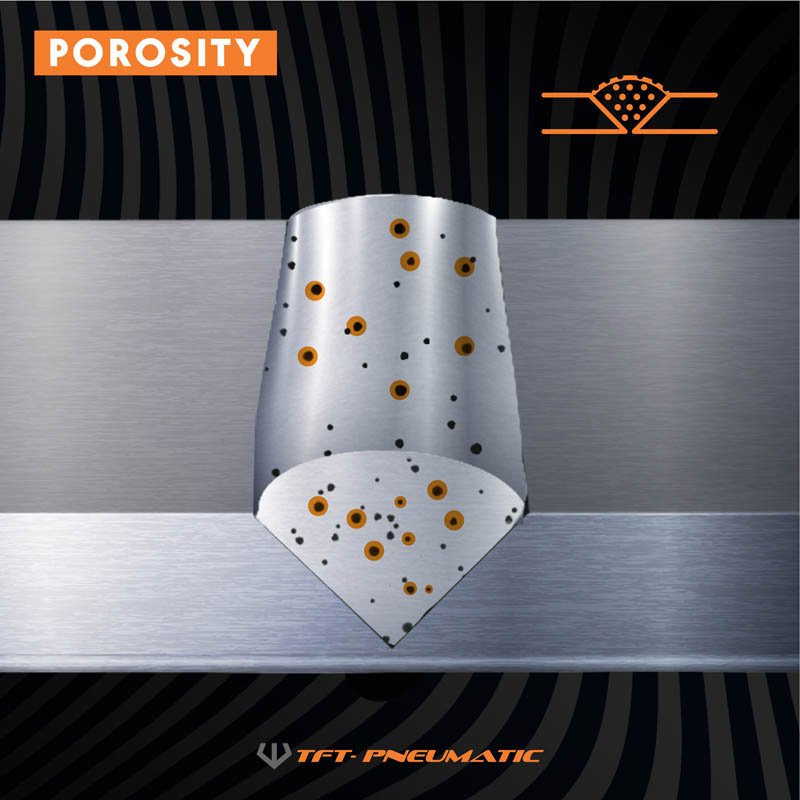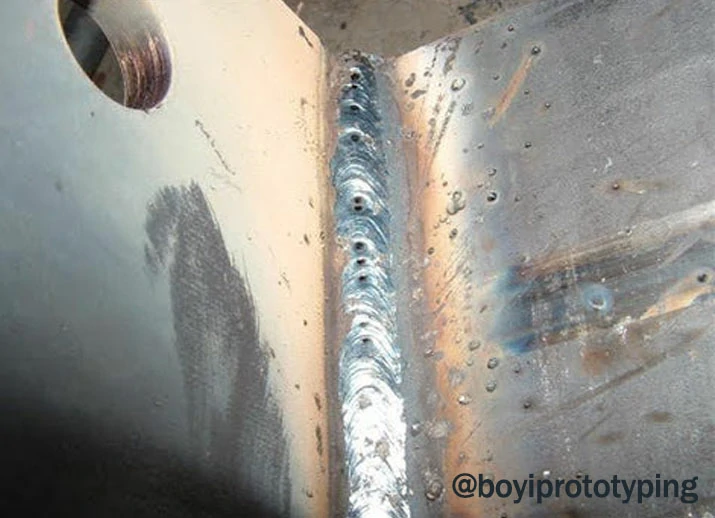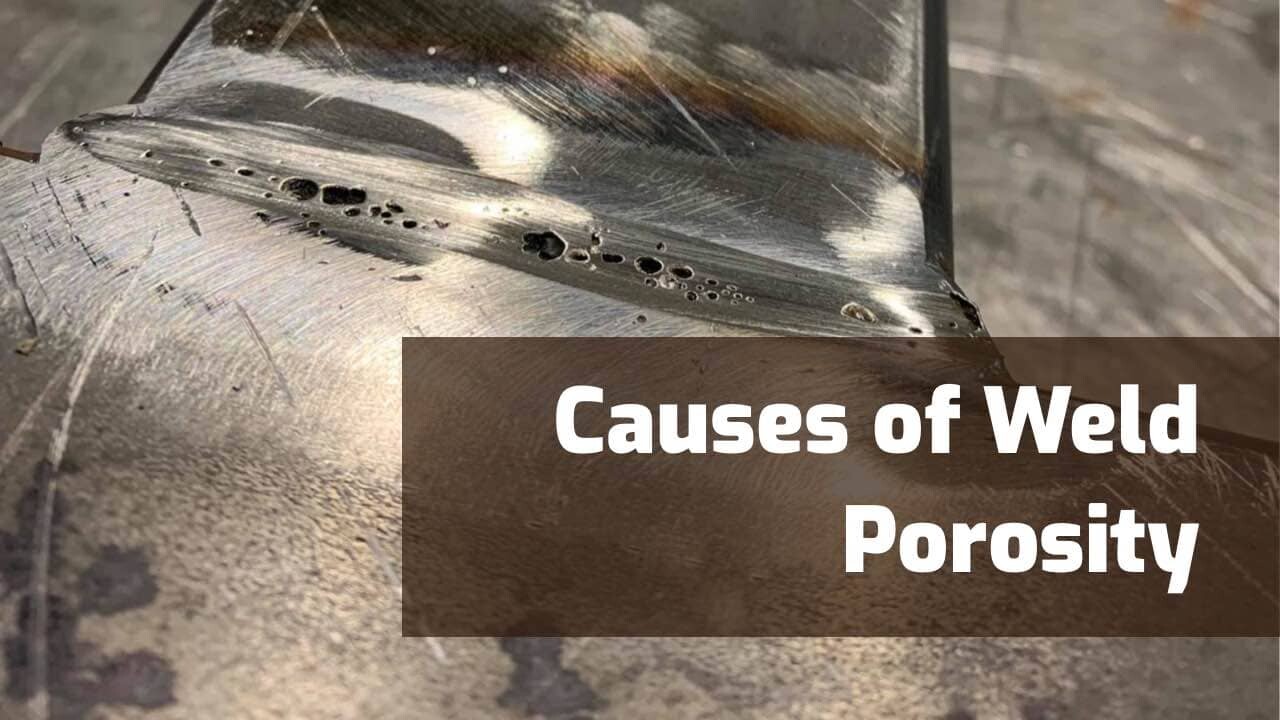Untangling the Mystery of Porosity in Welding: Tips for Lessening Flaws and Optimizing Quality
In the complex world of welding, porosity remains a persistent challenge that can considerably impact the high quality and stability of bonded joints. As we dig right into the midsts of porosity in welding, discovering the secrets to its avoidance and control will certainly be extremely important for specialists looking for to grasp the art of top quality weldments.
Understanding Porosity in Welding
Porosity in welding, a common issue experienced by welders, refers to the existence of gas pockets or spaces in the welded material, which can compromise the honesty and top quality of the weld. These gas pockets are typically trapped during the welding process as a result of numerous variables such as inappropriate securing gas, polluted base materials, or incorrect welding criteria. The formation of porosity can damage the weld, making it prone to cracking and corrosion, inevitably causing structural failures.
By acknowledging the value of maintaining appropriate gas protecting, ensuring the tidiness of base products, and maximizing welding settings, welders can substantially lower the chance of porosity formation. Generally, a comprehensive understanding of porosity in welding is vital for welders to generate high-quality and durable welds.

Usual Root Causes Of Porosity
When checking welding processes for prospective quality issues, understanding the common causes of porosity is important for maintaining weld integrity and preventing architectural failures. Porosity, defined by the presence of dental caries or gaps in the weld steel, can substantially endanger the mechanical buildings of a bonded joint.
Additionally, welding at incorrect parameters, such as excessively high traveling speeds or currents, can create excessive turbulence in the weld swimming pool, trapping gases and creating porosity. By addressing these usual reasons through appropriate gas shielding, material prep work, and adherence to ideal welding criteria, welders can reduce porosity and improve the quality of their welds.
Methods for Porosity Avoidance
Executing efficient preventive procedures is crucial in lessening the event of porosity in welding procedures. One technique for porosity prevention is making certain proper cleaning of the base metal prior to welding. Impurities such as oil, oil, corrosion, and paint can lead to porosity, so extensive cleansing making use of appropriate solvents or mechanical methods is necessary.

Utilizing premium filler materials and shielding gases that are ideal for the base steel and welding process can substantially minimize the danger of porosity. Additionally, maintaining proper welding criteria, such as voltage, existing, take a trip speed, and gas flow rate, is crucial for porosity avoidance.
In addition, utilizing appropriate welding techniques, such as maintaining a regular traveling speed, electrode angle, and arc size, can aid stop porosity (What is Porosity). Ample training of welders to guarantee they adhere to ideal methods and quality assurance treatments is likewise vital in decreasing porosity issues in welding

Best Practices for Top Quality Welds
Making sure adherence to market standards and correct weld joint prep work are basic facets of accomplishing regularly top quality welds. In addition to these fundamental steps, there are several ideal practices that welders can apply to even more boost the high quality of their welds. One key technique is preserving correct cleanliness in the welding location. Pollutants such as oil, oil, rust, and paint can detrimentally affect the top quality of the weld, resulting in defects. Completely cleaning the workpiece and bordering area prior to welding can help alleviate these issues.
Another ideal practice is to thoroughly pick the appropriate welding parameters for the details products being joined. This includes establishing the right voltage, existing, take a trip speed, and protecting gas circulation rate. Correct parameter choice makes sure optimum weld reference infiltration, blend, and total quality. Utilizing high-grade welding consumables, such as electrodes and filler metals, can significantly impact the final weld quality. Purchasing premium consumables can lead to more powerful, more resilient welds with see this fewer defects. By complying with these finest techniques, welders can continually produce premium welds that meet market criteria and go beyond customer assumptions.
Importance of Porosity Control
Porosity control plays an important role in making sure the integrity and quality of welding joints. Porosity, identified by the presence of dental caries or voids within the weld metal, can substantially jeopardize the mechanical residential properties and structural integrity of the weld. Too much porosity compromises the weld, making it a lot more prone to breaking, deterioration, and general failing under operational tons.
Effective porosity control is vital for preserving the desired mechanical residential or commercial properties, such as strength, ductility, and strength, of the welded joint. What is Porosity. By lessening porosity, welders can improve the total high quality and reliability of the weld, making sure that it satisfies the efficiency needs of the designated application
Furthermore, porosity control is see this important for accomplishing the desired visual look of the weld. Extreme porosity not just compromises the weld but also takes away from its visual charm, which can be important in industries where aesthetic appeals are very important. Proper porosity control strategies, such as using the right securing gas, managing the welding parameters, and making sure appropriate tidiness of the base materials, are essential for producing top quality welds with marginal defects.

Conclusion
In conclusion, porosity in welding is a common issue that can compromise the high quality of the weld. It is crucial to manage porosity in welding to make certain the integrity and stamina of the last item.